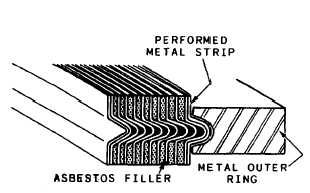Figure 7-1.—Spiral-wouna metallic-asbestos gasket.
easily bent and requires careful handling. In
addition, copper becomes hard when used over
long periods and when subjected to compression.
Whenever a unit or component is disassembled,
the copper sealing rings should be replaced.
However, if new rings are not available and the
part must be repaired, the old ring should be
softened by annealing. (Annealing is the process
of heating a metal, then cooling it, to make it
more pliable and less brittle.)
Metallic piston rings are used as packing in
some fluid power actuating cylinders. These rings
are similar in design to the piston rings in
automobile engines.
Metal is also used with asbestos to form
spiral-wound metallic-asbestos gaskets (fig. 7-1).
These gaskets are composed of interlocked plies
of preformed corrugated metal and asbestos
strips, called a filler.
The filler may or may not be encased in a solid
metal outer ring. These gaskets are used in flanged
connections and for connecting the body to the
bonnet in some valves, and are usually required
in specific high-pressure, high-temperature
applications.
RUBBER
The term rubber
and synthetic rubbers,
covers many natural
each of which can be
compounded into numerous varieties. The
characteristics of these varieties have a wide range,
as shown in table 7-1. The table shows, with the
exception of a few basic similarities, that rubbers
have diverse properties and limitations; therefore,
specific applications require careful study before
the sealing material is selected.
Natural rubbers have many of the charac-
teristics required in an effective seal. However,
their very poor resistance to petroleum fluids and
rapid aging when exposed to oxygen or ozone limit
their use. Today their use has almost ceased.
There are two general classes of synthetic
rubber seals. One class is made entirely of a certain
synthetic rubber. The term homogeneous, which
means having uniform structure or composition
throughout, is frequently used to describe this
class of seal. The other class of seal is made by
impregnating woven cotton duck or fine-weave
asbestos with synthetic rubber. This class is
sometimes referred to as fabricated seals.
Additional information on sealing materials
is provided in the Military Handbook, Gasket
Materials (Nonmetalic), MIL-HDBK-212; and
the Naval Ships’ Technical Manual, chapter 078.
TYPES OF SEALS
Fluid power seals are usually typed according
to their shape or design. These types include
T-seals, V-rings, O-rings, U-cups and so on. Some
of the most commonly used seals are discussed
in the remainder of this chapter.
T-SEALS
The T-seal has an elastomeric bidirectional
sealing element resembling an inverted letter T.
This sealing element is always paired with two
special extrusion-resisting backup rings, one on
each side of the T. The basic T-seal configuration
is shown in figure 7-2, view A. The backup rings
Figure7 - 2 . – T - seals .
7-3




